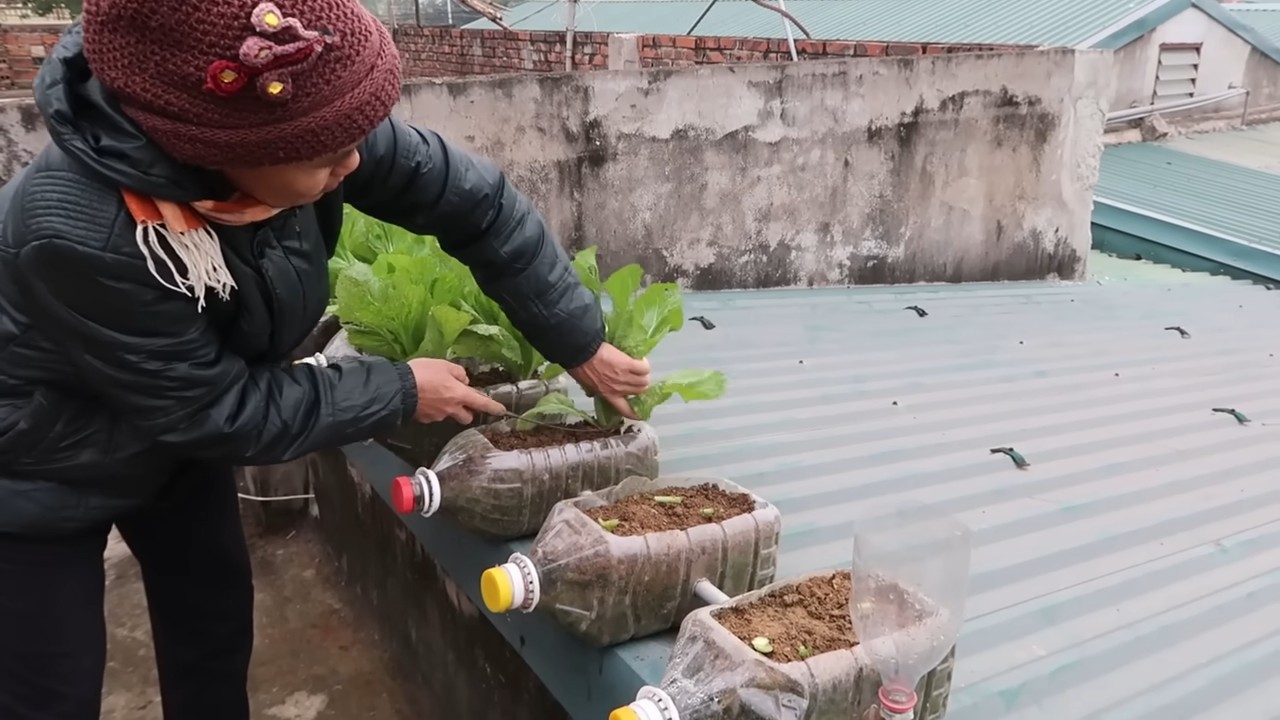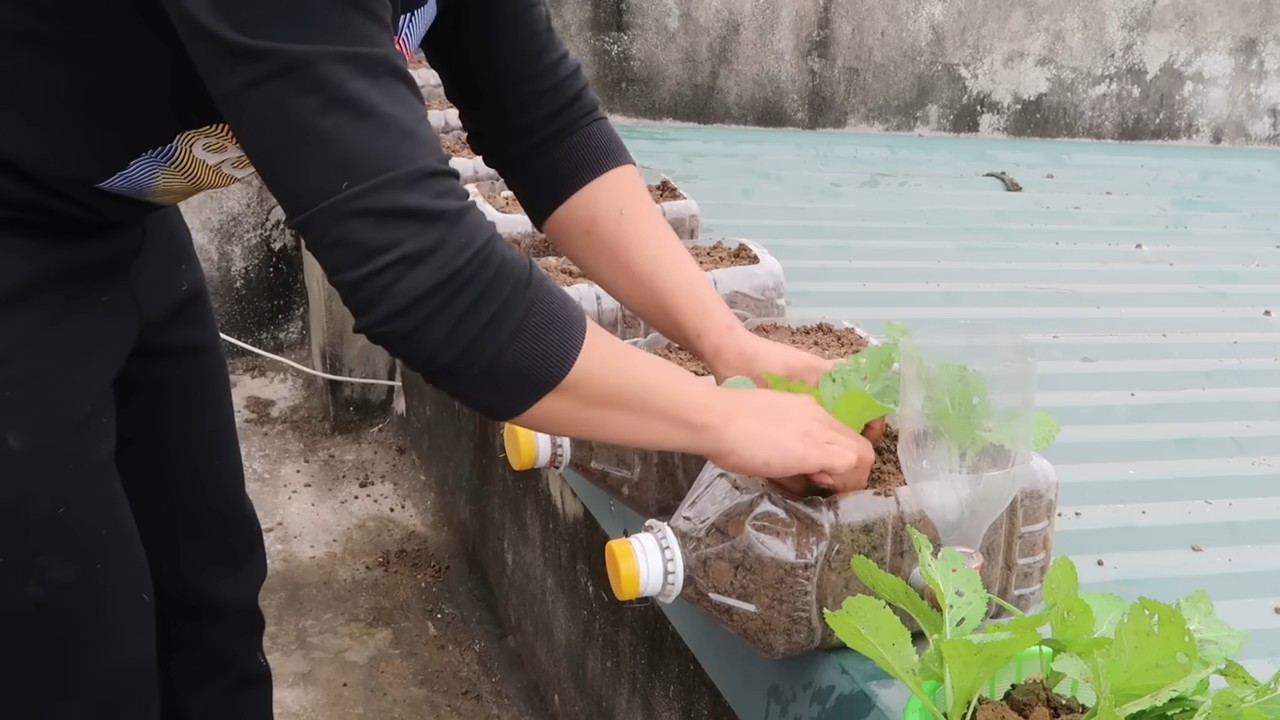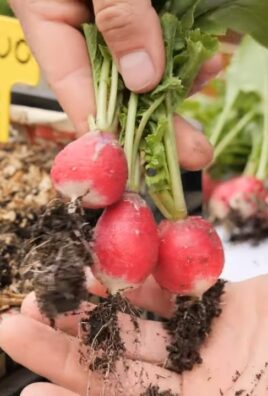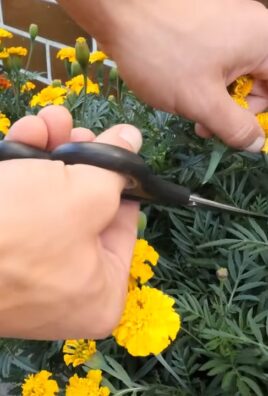Year Round Vegetable Gardening: imagine stepping outside your back door in the dead of winter and harvesting fresh, vibrant greens for your salad. Sounds like a dream, right? Well, it doesn’t have to be! This DIY guide is your passport to a continuous harvest, no matter the season. Forget those bland, store-bought vegetables – we’re about to unlock the secrets to growing your own delicious produce 365 days a year.
The concept of extending the growing season isn’t new. For centuries, cultures around the world have employed clever techniques to coax food from the earth even when the weather turns harsh. From ancient Roman greenhouses to traditional Japanese cold frames, the desire for fresh, local food has always driven innovation. Now, you can tap into that same ingenuity with simple, affordable DIY projects.
Why is year round vegetable gardening so important? In today’s world, we’re increasingly aware of the environmental impact of transporting food long distances. Plus, let’s be honest, nothing beats the taste and nutritional value of homegrown vegetables. This guide will empower you to reduce your carbon footprint, save money on groceries, and enjoy the unparalleled satisfaction of nurturing your own food supply. I’m excited to share these simple yet effective tricks and hacks that will transform your garden into a year-round source of fresh, healthy produce. Let’s get started!

Year-Round Vegetable Gardening: A DIY Guide to Fresh Produce All Year Long
Hey there, fellow gardening enthusiasts! Ever dream of biting into a homegrown tomato in the dead of winter? Or enjoying a crisp salad made with lettuce you harvested just minutes before? Well, dream no more! With a little planning and some DIY ingenuity, you can absolutely extend your growing season and enjoy fresh vegetables all year round. I’m going to walk you through the steps to make this a reality.
Understanding Your Climate and Choosing the Right Plants
Before we dive into the DIY projects, it’s crucial to understand your local climate and choose vegetables that can tolerate the conditions. This is the foundation of successful year-round gardening.
* Know Your Hardiness Zone: This is the most basic step. Find your USDA plant hardiness zone. This will tell you the average minimum winter temperature in your area. You can easily find this information online by searching “USDA plant hardiness zone map.”
* Consider Microclimates: Even within your yard, there can be microclimates. A south-facing wall will be warmer than a north-facing one. Observe your yard throughout the year to identify these warmer and cooler spots.
* Choose Cold-Hardy Vegetables: Focus on vegetables that can withstand frost and cold temperatures. Some excellent choices include:
* Greens: Spinach, kale, collard greens, lettuce (especially winter varieties), arugula, Swiss chard
* Root Vegetables: Carrots, beets, turnips, parsnips, radishes
* Brassicas: Broccoli, cauliflower, cabbage, Brussels sprouts, kale
* Onions and Garlic: These are incredibly hardy and can often overwinter in many climates.
* Peas: Some varieties can be planted in late fall for an early spring harvest.
* Succession Planting: This involves planting crops in succession throughout the year to ensure a continuous harvest. For example, plant a row of lettuce every two weeks.
* Record Keeping: Keep a garden journal to track what works and what doesn’t. Note planting dates, harvest dates, weather conditions, and any problems you encounter. This will be invaluable for future planning.
Building a Simple Cold Frame
A cold frame is a simple, unheated structure that protects plants from frost and extends the growing season. It’s basically a mini-greenhouse. This is one of the easiest and most effective DIY projects for year-round gardening.
* Materials You’ll Need:
* Reclaimed wood (old pallets work great!) or lumber (pine or cedar are good choices)
* Clear plastic sheeting (heavy-duty greenhouse plastic is ideal) or old windows/storm doors
* Hinges
* Screws or nails
* Staple gun (if using plastic sheeting)
* Measuring tape
* Saw
* Drill
* Design Considerations:
* Size: Determine the size based on the space you have available and the number of plants you want to protect. A common size is 4 feet wide by 6 feet long.
* Angle: The top of the cold frame should be angled towards the south to maximize sunlight exposure. A 30-45 degree angle is ideal.
* Height: The back of the cold frame should be taller than the front to create the angle. A back height of 18-24 inches and a front height of 12-18 inches is a good starting point.
* Step-by-Step Instructions:
1. Cut the Wood: Cut the wood according to your chosen dimensions. You’ll need two side pieces, a front piece, a back piece, and a top piece (or two top pieces if you’re making a hinged lid).
2. Assemble the Frame: Assemble the four sides of the frame using screws or nails. Make sure the corners are square.
3. Attach the Top: If you’re using a single piece of wood for the top, simply attach it to the frame using hinges. If you’re using two pieces, attach them to the frame with hinges, creating a hinged lid that can be opened for ventilation.
4. Cover with Plastic or Windows: If you’re using plastic sheeting, staple it securely to the frame. If you’re using old windows or storm doors, attach them to the frame with hinges.
5. Placement: Place the cold frame in a sunny location, ideally facing south.
6. Ventilation: On sunny days, open the lid of the cold frame to prevent overheating. Close it at night to retain heat.
Building a Mini Hoop House (Low Tunnel)
A mini hoop house, also known as a low tunnel, is another excellent way to protect plants from cold weather. It’s a simple structure made of flexible hoops covered with plastic.
* Materials You’ll Need:
* PVC pipe or metal conduit (1/2 inch or 3/4 inch diameter)
* Clear plastic sheeting (greenhouse plastic is best)
* Clamps or clips to secure the plastic to the hoops
* Measuring tape
* Saw (if cutting PVC pipe)
* Ground stakes or rebar (optional, for added stability)
* Design Considerations:
* Length: Determine the length based on the row of plants you want to protect.
* Height: The height should be sufficient to allow plants to grow without touching the plastic. 2-3 feet is usually adequate.
* Spacing: Space the hoops 3-4 feet apart.
* Step-by-Step Instructions:
1. Cut the Hoops: Cut the PVC pipe or metal conduit into equal lengths. The length will depend on the desired height and width of the hoop house. A length of 10-12 feet is a good starting point.
2. Insert the Hoops: Insert the ends of the hoops into the ground, spacing them 3-4 feet apart. If the ground is hard, you may need to use a hammer to drive the hoops in. For added stability, you can drive ground stakes or rebar into the ground and attach the hoops to them.
3. Cover with Plastic: Drape the plastic sheeting over the hoops, ensuring that it covers the entire structure.
4. Secure the Plastic: Secure the plastic to the hoops using clamps or clips. You can also bury the edges of the plastic in the soil to create a tighter seal.
5. Ventilation: On sunny days, lift the sides of the plastic to provide ventilation. You can also cut vents in the plastic and cover them with netting to prevent pests from entering.
Using Row Covers
Row covers are lightweight fabrics that are placed directly over plants to protect them from frost, insects, and wind. They’re a simple and inexpensive way to extend the growing season.
* Types of Row Covers:
* Lightweight Row Covers: These provide minimal protection from frost but are excellent for insect control.
* Medium-Weight Row Covers: These offer moderate frost protection and are suitable for extending the growing season by a few weeks.
* Heavy-Weight Row Covers: These provide the most frost protection and can be used to overwinter hardy vegetables.
* Materials You’ll Need:
* Row cover fabric (available at most garden centers)
* Garden staples or rocks to secure the edges
* Step-by-Step Instructions:
1. Cover the Plants: Drape the row cover fabric over the plants, ensuring that it covers the entire area you want to protect.
2. Secure the Edges: Secure the edges of the row cover with garden staples or rocks to prevent it from blowing away.
3. Ventilation: On sunny days, you may need to lift the row cover to provide ventilation, especially if you’re using a heavy-weight fabric.
Mulching for Winter Protection
Mulching is the process of covering the soil around plants with organic materials to insulate the soil, retain moisture, and suppress weeds. It’s an essential practice for year-round gardening.
* Types of Mulch:
* Straw: An excellent insulator and readily available.
* Leaves: A free and readily available resource. Shred them first to prevent matting.
* Wood Chips: Good for long-term mulching but can tie up nitrogen in the soil.
* Compost: Adds nutrients to the soil while providing insulation.
* Step-by-Step Instructions:
1. Apply the Mulch: Spread a 3-4 inch layer of mulch around the base of the plants, being careful not to cover the stems.
2. Replenish as Needed:

Conclusion
So, there you have it! Embracing year-round vegetable gardening isn’t just a whimsical dream; it’s an achievable reality with a little planning and the right techniques. We’ve explored the core principles, from selecting cold-hardy crops to constructing protective structures, and hopefully, you’re feeling inspired to extend your growing season.
But why is this DIY approach a must-try? Beyond the obvious benefit of fresh, homegrown produce gracing your table even in the depths of winter, year-round vegetable gardening offers a profound connection to nature. It allows you to observe the subtle shifts in seasons, to nurture life even when the world outside seems dormant, and to cultivate a deeper appreciation for the food you eat. Plus, think of the bragging rights! Imagine serving a vibrant salad made entirely from your own garden in January.
Furthermore, year-round gardening is an exercise in resourcefulness and sustainability. By minimizing your reliance on commercially grown produce, you reduce your carbon footprint and support a more localized food system. You’ll also gain a greater understanding of the specific needs of your plants, leading to healthier, more resilient crops.
Now, let’s talk variations. While we’ve focused on general principles, remember that year-round vegetable gardening is highly adaptable to your specific climate and resources. If you live in a milder region, you might be able to get away with simple row covers or cold frames. In colder climates, a greenhouse or even an indoor hydroponic system might be necessary. Experiment with different techniques and find what works best for you.
Consider these ideas to personalize your year-round gardening journey:
* Vertical Gardening: Maximize space in small areas by growing herbs and leafy greens vertically.
* Succession Planting: Stagger your planting times to ensure a continuous harvest throughout the year.
* Companion Planting: Utilize beneficial plant pairings to deter pests and improve soil health.
* Seed Saving: Collect seeds from your best-performing plants to create a self-sustaining garden.
* Composting: Recycle kitchen scraps and yard waste to create nutrient-rich compost for your plants.
Don’t be afraid to experiment with different varieties of vegetables. Some, like kale, spinach, and certain types of lettuce, are incredibly cold-hardy and can withstand freezing temperatures. Others, like carrots and beets, can be overwintered in the ground with proper protection. Research which varieties are best suited to your climate and growing conditions.
The key to successful year-round vegetable gardening is observation and adaptation. Pay close attention to the weather patterns in your area and adjust your strategies accordingly. Be prepared to protect your plants from frost, snow, and extreme temperatures. And most importantly, don’t give up! Even experienced gardeners face challenges, but the rewards of fresh, homegrown produce year-round are well worth the effort.
We wholeheartedly encourage you to embark on this rewarding journey of year-round vegetable gardening. Start small, experiment with different techniques, and learn from your successes and failures. The satisfaction of harvesting fresh vegetables from your own garden in the middle of winter is truly unparalleled.
So, grab your gardening gloves, gather your seeds, and get ready to extend your growing season! We can’t wait to hear about your experiences. Share your tips, tricks, and triumphs in the comments below. Let’s create a community of year-round gardeners who are passionate about growing their own food, no matter the season. Let us know what you are growing and what challenges you are facing. Together, we can cultivate a more sustainable and delicious future.
Frequently Asked Questions (FAQ)
What are the easiest vegetables to grow year-round?
The easiest vegetables to grow year-round depend on your climate, but some generally reliable options include:
* Leafy Greens: Spinach, kale, lettuce, arugula, and Swiss chard are cold-hardy and can be grown in cold frames or under row covers.
* Root Vegetables: Carrots, beets, turnips, and radishes can be overwintered in the ground with proper mulching.
* Onions and Garlic: These can be planted in the fall and harvested in the spring.
* Herbs: Parsley, chives, thyme, and oregano are relatively hardy and can be grown indoors or in protected areas.
* Mustard Greens: These are very cold hardy and can be grown in the winter in many areas.
How do I protect my plants from frost and freezing temperatures?
There are several ways to protect your plants from frost and freezing temperatures:
* Cold Frames: These simple structures provide a sheltered environment for plants, trapping heat and protecting them from wind and frost.
* Row Covers: Lightweight fabric covers that can be placed directly over plants to provide insulation.
* Mulching: Applying a thick layer of mulch around plants helps to insulate the soil and protect the roots from freezing.
* Greenhouses: These provide a controlled environment for year-round growing, but can be expensive to build and maintain.
* Cloches: Bell-shaped covers that can be placed over individual plants to protect them from frost.
* Watering: Water your plants before a frost. Wet soil retains heat better than dry soil.
What type of soil is best for year-round vegetable gardening?
The best type of soil for year-round vegetable gardening is well-draining, fertile soil that is rich in organic matter. Amend your soil with compost, aged manure, or other organic materials to improve its structure and fertility. A soil test can help you determine the pH level and nutrient content of your soil and identify any deficiencies that need to be addressed. Aim for a pH between 6.0 and 7.0 for most vegetables.
How often should I water my plants in the winter?
Watering frequency in the winter depends on the weather conditions and the type of plants you are growing. Generally, plants need less water in the winter than in the summer because they are not actively growing. Check the soil moisture regularly and water only when the top inch or two of soil feels dry to the touch. Avoid overwatering, as this can lead to root rot. Water in the morning to allow the foliage to dry before nightfall, which can help prevent fungal diseases.
What are some common pests and diseases that affect year-round vegetable gardens?
Common pests and diseases that can affect year-round vegetable gardens include aphids, whiteflies, slugs, snails, fungal diseases, and root rot. Monitor your plants regularly for signs of pests or diseases and take action promptly to prevent them from spreading. Use organic pest control methods such as insecticidal soap, neem oil, or diatomaceous earth. Ensure good air circulation to prevent fungal diseases.
Can I grow vegetables indoors year-round?
Yes, you can grow vegetables indoors year-round using grow lights or a sunny windowsill. Some good options for indoor vegetable gardening include leafy greens, herbs, tomatoes, peppers, and strawberries. Use a well-draining potting mix and provide adequate light, water, and nutrients. Consider using a hydroponic system for even greater control over the growing environment.
How do I choose the right grow lights for indoor vegetable gardening?
When choosing grow lights for indoor vegetable gardening, consider the following factors:
* Light Spectrum: Choose lights that provide a full spectrum of light, including blue and red wavelengths, which are essential for plant growth.
* Light Intensity: The intensity of the light should be appropriate for the type of plants you are growing. Leafy greens require less light than fruiting vegetables.
* Energy Efficiency: LED grow lights are more energy-efficient than traditional fluorescent or incandescent lights.
* Size and Coverage: Choose lights that are the appropriate size and coverage area for your growing space.
What is succession planting and how does it work?
Succession planting is the practice of planting crops at intervals to ensure a continuous harvest throughout the growing season. This can be done by planting the same crop every few weeks or by planting different crops that mature at different times. Succession planting helps to maximize your garden’s productivity and provides a steady supply of fresh vegetables.
How can I improve the soil in my year-round vegetable garden?
You can improve the soil in your year-round vegetable garden by adding organic matter, such as compost, aged manure, or leaf mold. Organic matter improves soil structure, drainage, and fertility. You can also use cover crops to improve soil health. Cover crops are plants that are grown specifically to improve the soil. They can be tilled into the soil or left on the surface as mulch.
What are some good resources for learning more about year-round vegetable gardening?
There are many excellent resources available for learning more about year-round vegetable gardening, including books, websites, and local gardening clubs. Some recommended resources include:
* “The Winter Harvest Handbook” by Eliot Coleman
* “Four-Season Harvest” by Eliot Coleman
* Your local cooperative extension service
* Online gardening forums and communities
* Local gardening workshops and classes




Leave a Comment